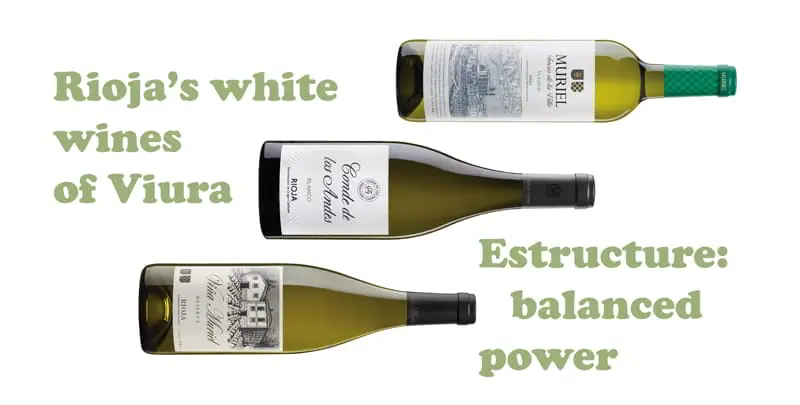But what exactly does this concept of structure mean? From an oenological point of view, what does it consist of? And, isn't structure a quality that is exclusively found in red wines?
Structure is "a global concept because it is the sum of a wine?s phenolic composition, acidity, alcohol content...," explains Chema Ryan, winemaker at Muriel Wines, who adds that Rioja whites tend to be more structured than those from other areas. Made with Viura grapes, the native and most widespread white variety in Rioja, they produce wines with a marked texture on the palate."This can be further enhanced in the winery through ageing and the stirring of the lees.? Why is that? "When white wine is stirred in the barrel or tank, the dead yeasts release mannoproteins, which are compounds that improve the organoleptic perception.? While all our whites have good structure, that is the reason why Viña Muriel Blanco Reserva and Conde de los Andes Blanco, which are aged over a long period of time, are perceived to be richer and full-bodied.
Going back to the actual concept, we have tried to track down the various definitions of structure that exist. We are particularly interested in two very similar ones, published respectively by the website Viajeros del Vino and Viñátigo, a producer in the Canary Islands. The latter definition is included in an excellent and very useful dictionary of tasting terms developed by La Guancha Secondary School in Tenerife. Let's take a look:
Structure. The frame of a wine. A wine with good structure has body, good acidity and flavour, with intensity and balance. If the expression 'good flavour structure' is used, it means that the wine is powerful and balanced on the palate.
(More on Viajeros del Vino ?in Spanish)
Structure. Frame. The cornerstone of any wine underpinning all of its components. It usually refers to the combination of fruit, alcohol, acidity, glycerol and tannins.(More on the diccionary published by Viñátigo ?in Spanish)
Finally, we like the comprehensive and suggestive description published in Vinetur by Cristina Vegas, a winemaker from Segovia:
A wine's balance is defined by its structure, volume, aroma and acidity. We can think of these four elements as the legs of a chair; if any of the components fail, either because it is missing or because its presence is excessive, the chair will wobble and the wine will be unbalanced.For a wine to be good, it must be balanced regardless of its style, vintage or colour.The first element to take into account is the structure: it is the skeleton of the wine and it will shape its final form. The molecules responsible for the structure are thetannins. Depending on the vintage, they can be green or astringent or they can be round; we can feel their presence, but they don't dry out the palate. We generally talk about structure in red wines, but this is also important in white wines.One of the requirements to determine whether a wine has enough backbone is that it should linger on the palate; in other words, that we enjoy the aromas and the mouthfeel of the wine once we have drunk it.
 "
"
You may also be interested in:




